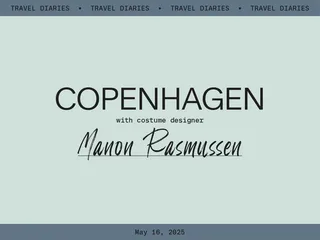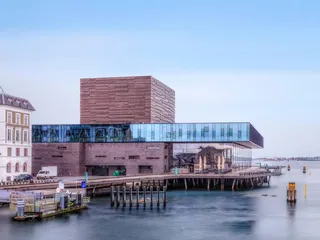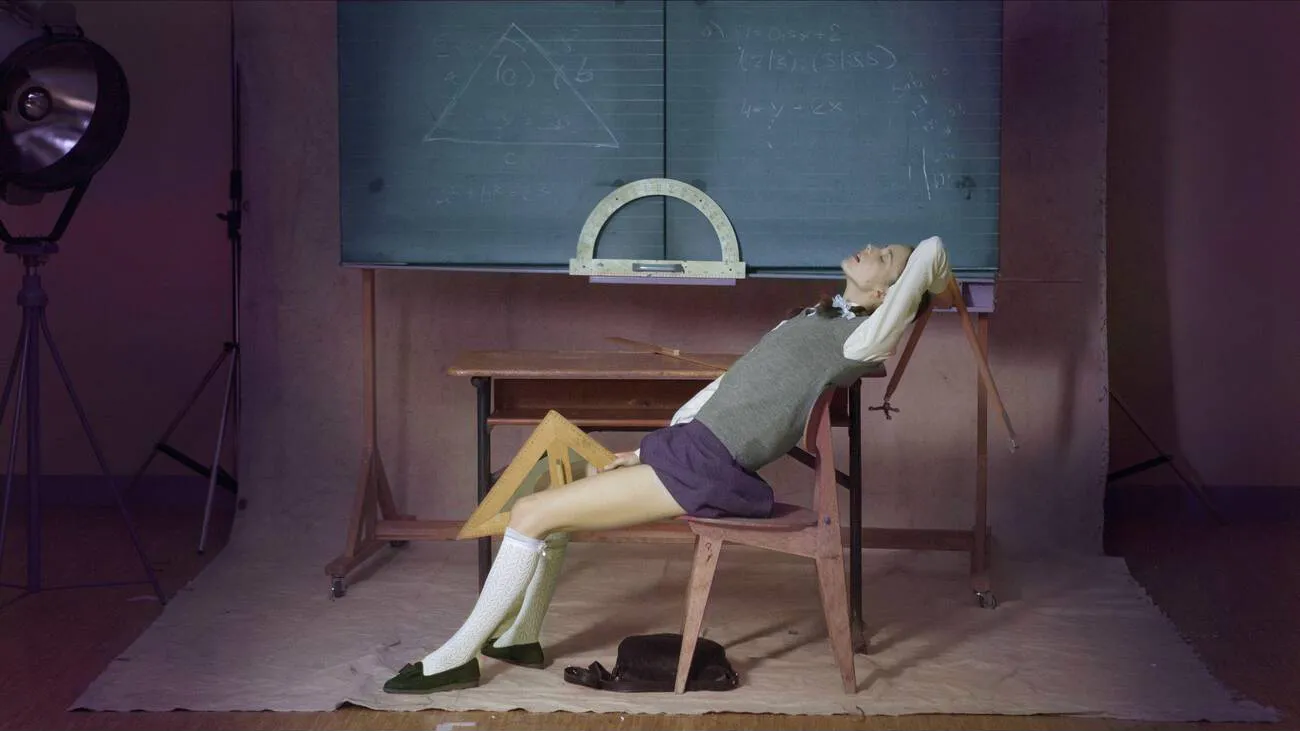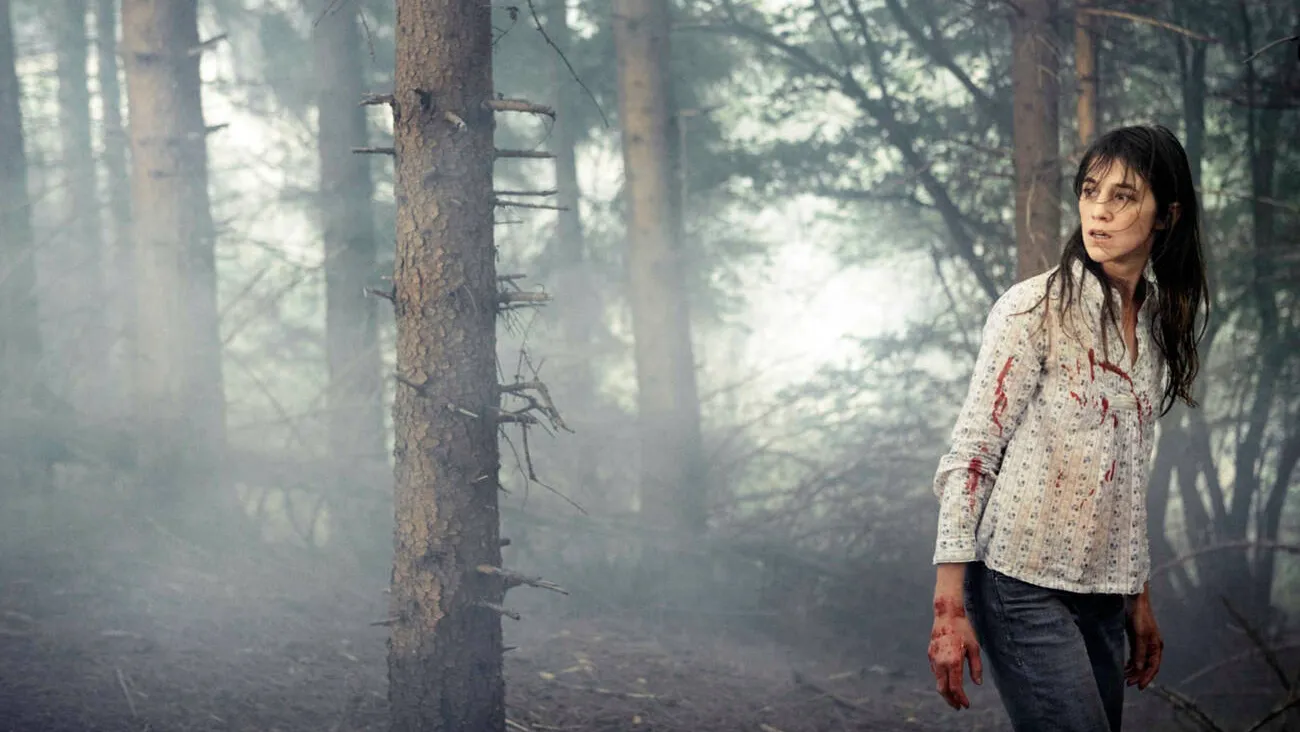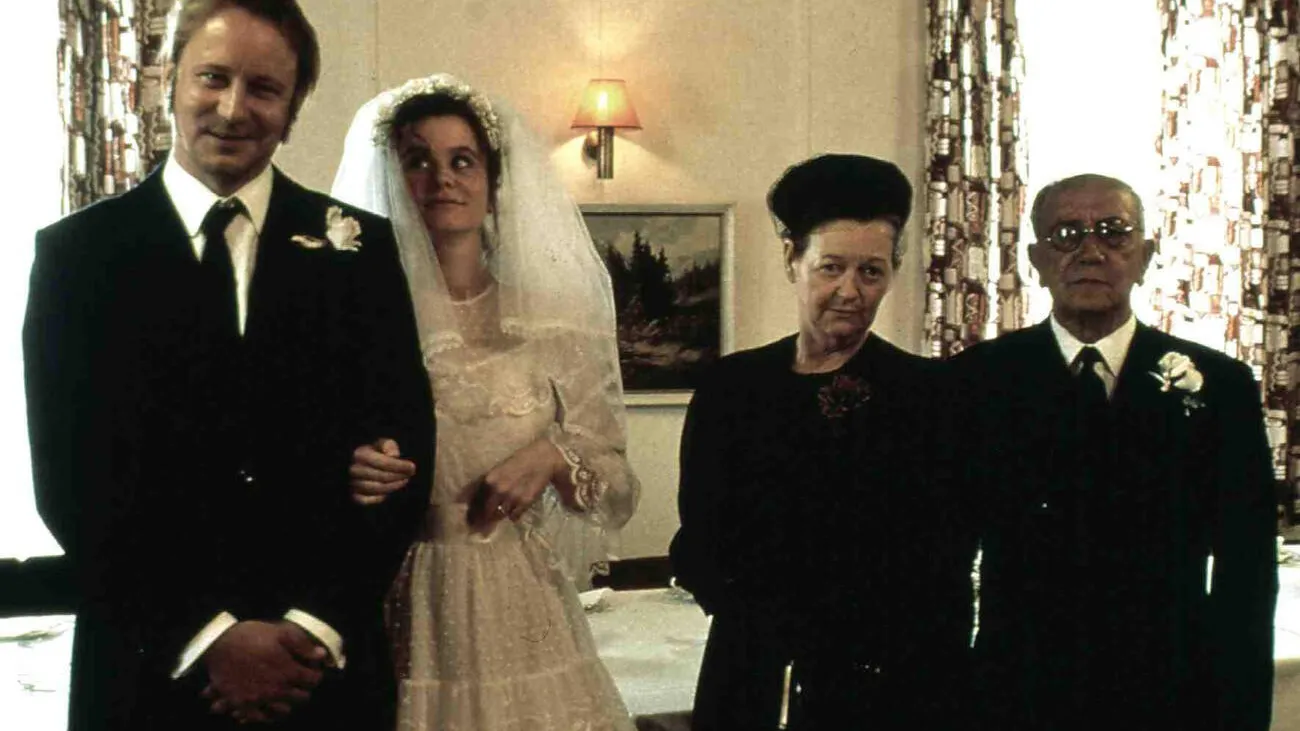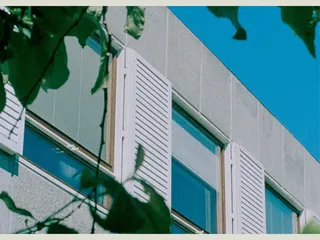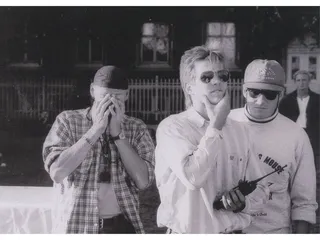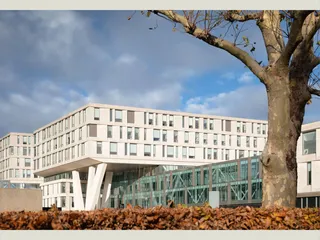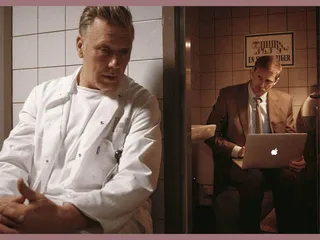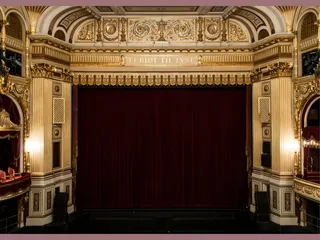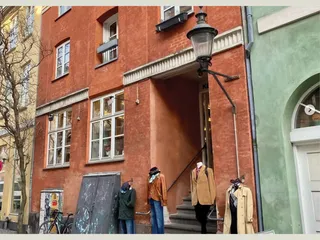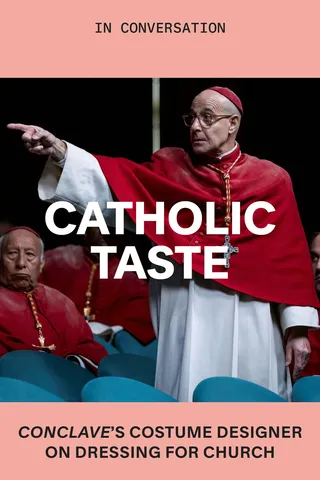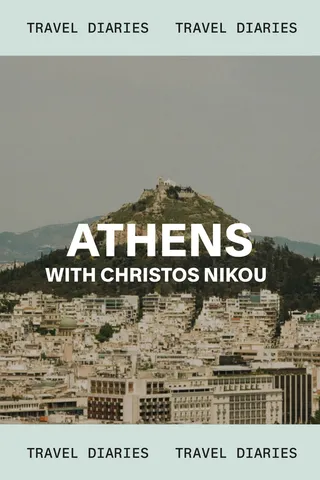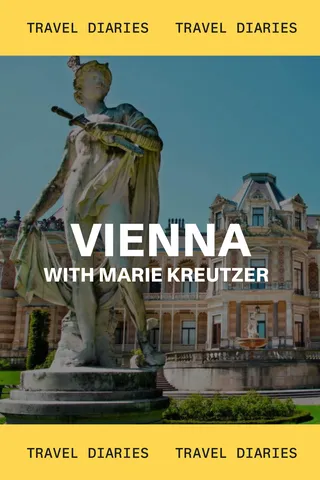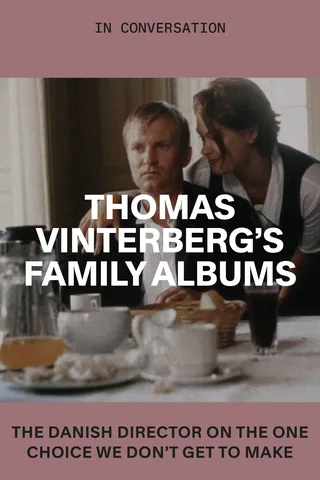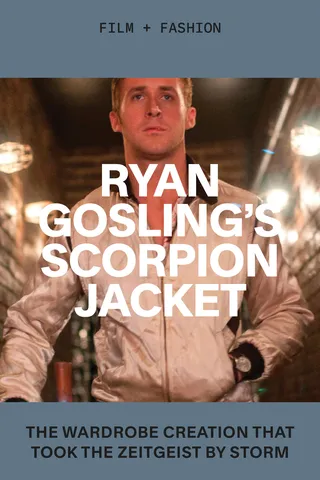Travel Diaries: Copenhagen with Manon Rasmussen
By Yonca Talu
The Royal Danish Playhouse in Copenhagen
Lars von Trier’s longtime costume designer on her go-to spots for art, theater and textiles in the Danish capital
From the golden-hearted working-class protagonists of Breaking the Waves (1996), Dancer in the Dark (2000) and Dogville (2003) to the existentially tortured antiheroes of Antichrist (2009), Melancholia (2011), Nymphomaniac (2013) and The House That Jack Built (2018), costume designer Manon Rasmussen has helped shape some of modern cinema’s most fascinating and controversial characters over her four-decade collaboration with Lars von Trier. Dressing stars like Björk, Nicole Kidman, Charlotte Gainsbourg and Kirsten Dunst, Rasmussen has emerged as a master of sartorial minimalism. Her evocative monochrome costumes—such as Kidman’s earth-tone Depression-era workwear in Dogville, Dunst’s pristine white tulle wedding gown in Melancholia and Matt Dillon’s blood-red hooded cloak in The House That Jack Built—echo the fable-like quality of von Trier’s films and complement the stark environments in which they’re set.
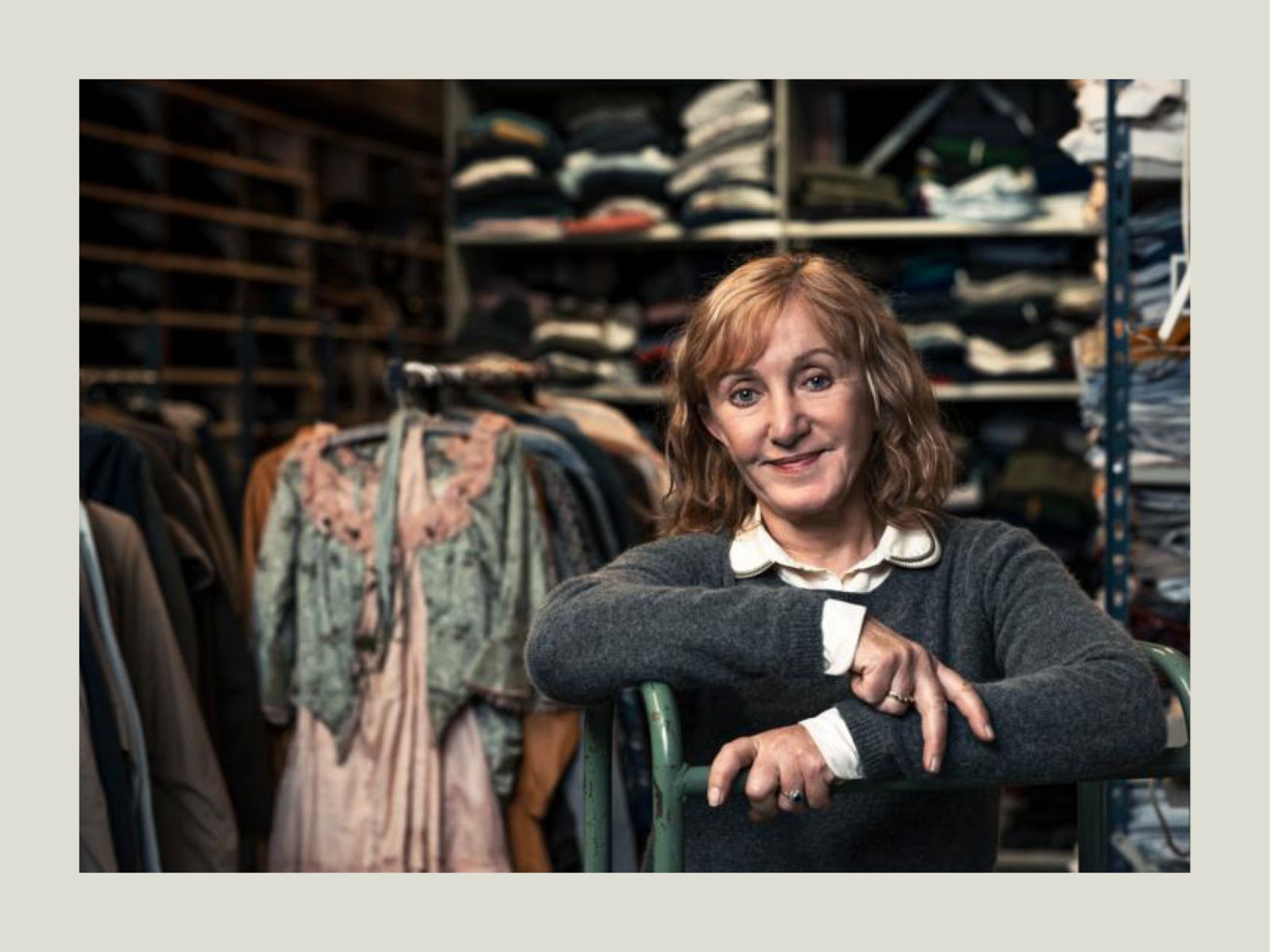
Manon Rasmussen (photo by Robin Skjoldborg)
While the majority of von Trier’s films were shot outside his native Denmark, Rasmussen conceived of their costumes in the country’s capital, Copenhagen, where she has been based since her youth. After working as a seamstress and theater actor as part of the city’s vibrant counterculture hippie scene, Rasmussen attended Denmark’s very first fashion school, located in the heart of Copenhagen: the now-defunct Københavns Tilskærer-Akademi. There, she discovered a passion for historical costumes that led her to a film career full of period dramas, including 2012’s A Royal Affair, starring Mads Mikkelsen and Alicia Vikander. The winner of a record 17 Robert Awards (the Danish equivalent of the Oscars) in a single category, Rasmussen also frequently collaborates with Bille August, Susanne Bier and Thomas Vinterberg—she dressed the cast of the latter’s Oscar-winning Another Round (2020). The 73-year-old costume designer joined Galerie for a conversation about Copenhagen that traces her life journey and pays tribute to the cultural institutions and neighborhoods where she finds inspiration. —Yonca Talu
![<I>Nymphomaniac: Vol. I</I>, dir. Lars von Trier, 2013]() Nymphomaniac: Vol. I, dir. Lars von Trier, 2013
Nymphomaniac: Vol. I, dir. Lars von Trier, 2013![<I>A Royal Affair</I>, dir. Nicolaj Arcel, 2012]() A Royal Affair, dir. Nicolaj Arcel, 2012
A Royal Affair, dir. Nicolaj Arcel, 2012![<I>Antichrist</I>, dir. Lars von Trier, 2009]() Antichrist, dir. Lars von Trier, 2009
Antichrist, dir. Lars von Trier, 2009![<I>Dancer in the Dark</I>, dir. Lars von Trier, 2000]() Dancer in the Dark, dir. Lars von Trier, 2000
Dancer in the Dark, dir. Lars von Trier, 2000![<I>Breaking the Waves</I>, dir. Lars von Trier, 1996]() Breaking the Waves, dir. Lars von Trier, 1996
Breaking the Waves, dir. Lars von Trier, 1996
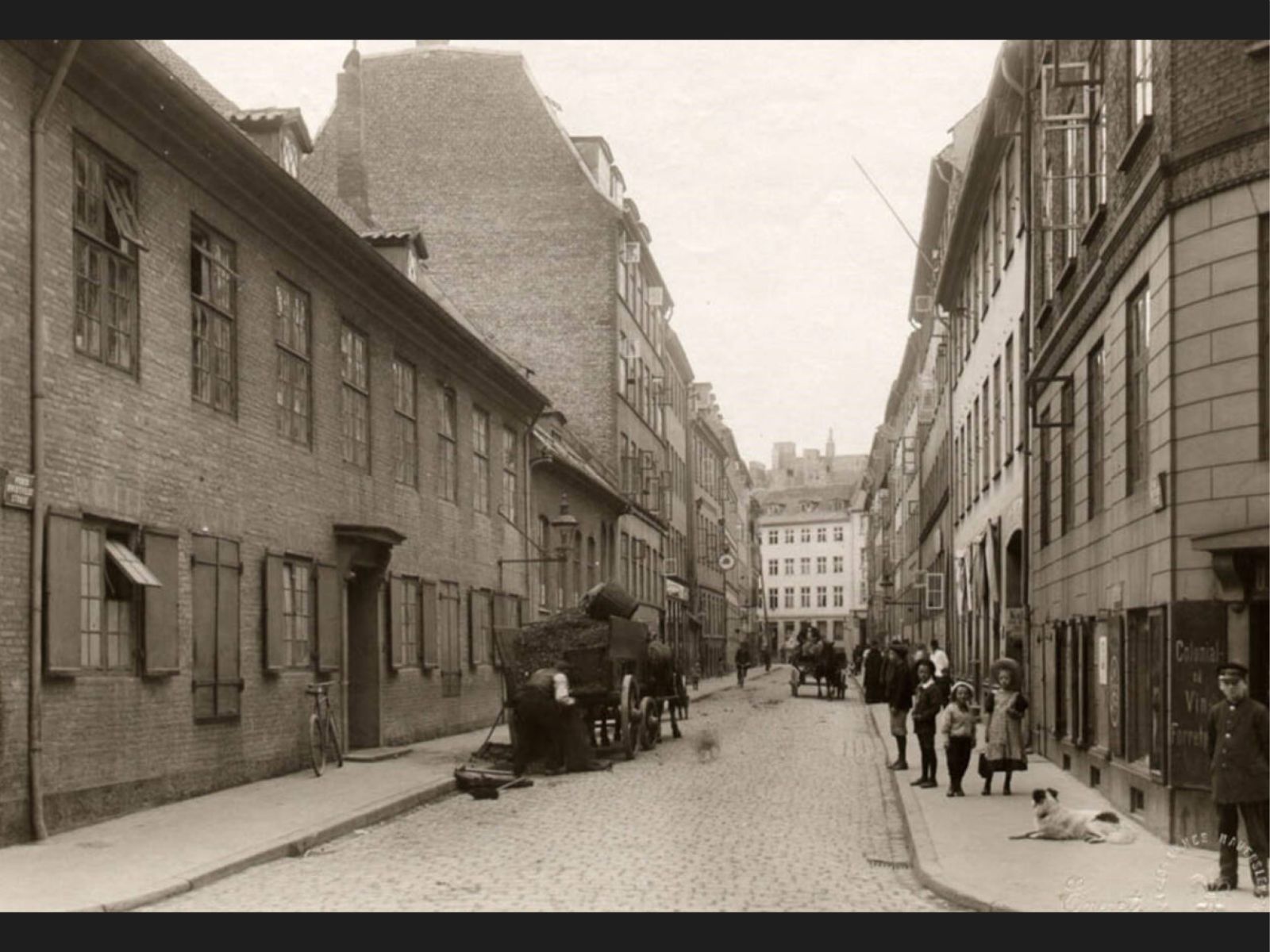
Peder Hvitfeldts Stræde in 1910
PEDER HVITFELDTS STRÆDE
In the early ’70s, I got divorced from my first husband, who was a rock musician. I was a twentysomething single mom and had to find a way to earn a living. I knew how to sew. So I started working as a seamstress at the collective crafts store Elverhøj, on Peder Hvitfeldts Stræde, a street with historic buildings in Copenhagen’s old town. We were 20 members. We shared the store’s expenses and took turns to take care of it. We were all eco-conscious and politicized: We believed in using organic, secondhand materials, treating people nicely and not making too much money. The store was a very relaxed and popular place. We drank coffee and tea and chatted with customers, and I could bring my little boy. Everybody did different things. Some of us made pottery, while others, like myself, made clothes. I would go to Amsterdam to buy secondhand velvet curtains, which I turned into colorful outfits with appliqués. I never made two pieces that looked the same. Unfortunately, Elverhøj closed in 1992. I recently looked up what’s in its place today: a secondhand clothing store called OSV Secondhand.
osvsecondhand.com
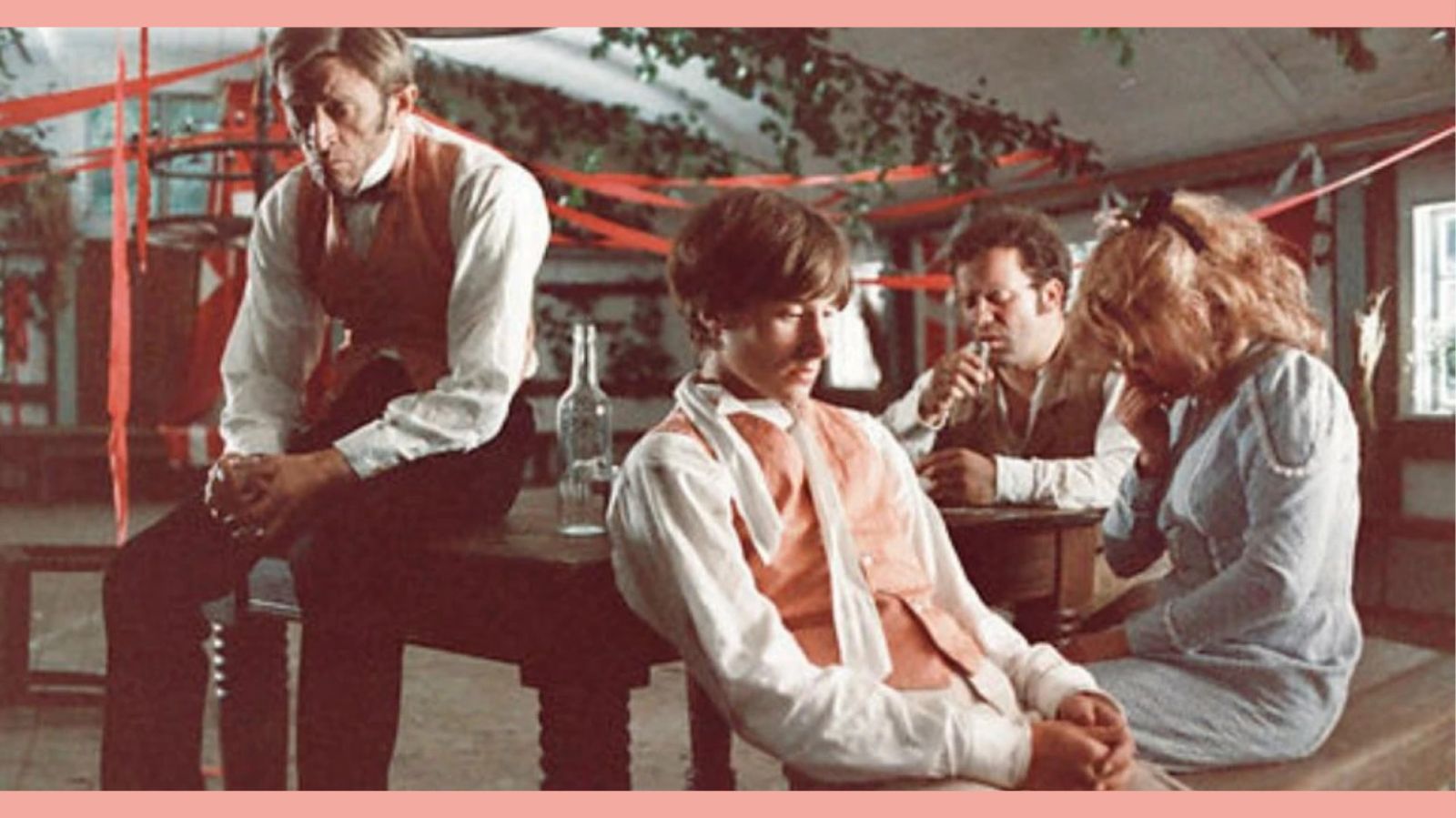
The Heritage, dir. Anders Refn, 1978
KØBENHAVNS TILSKÆRER-AKADEMI
In the late ’70s, I left Elverhøj and enrolled at Københavns Tilskærer-Akademi [i.e., Copenhagen Tailoring Academy; 1904–2008], known for being Denmark’s first fashion school. Because I was a single mom, the state paid for my tuition. At the time the school was located on the fourth floor of a building in Copenhagen’s City Hall Square. It was a beautiful, bright place with large windows. Being there felt like traveling back in time: The teachers were old ladies who’d been working at the school for decades. While most of the students were interested in modern fashion, I was interested in period costumes. Incidentally, the school had a supply of borrowed museum pieces. That meant I could take a real 19th-century dress and study it to figure out how it was cut. Then I made sewing patterns based on that dress. It was very inspiring to work on period pieces, and the head teacher was very supportive of me. But after a while I got a little bored of going to school and felt like I needed a change in my life. That’s when I was offered a job as a costume assistant on a period film, Anders Refn’s The Heritage [Slægten, 1978]. I left school to work on that movie, and that was the start of my film career.
“We believed in using organic, secondhand materials, treating people nicely and not making too much money.”
![]()
The National Film School of Denmark (photo courtesy of the National Film School of Denmark)
![]()
Thomas Vinterberg (center) on location of the graduation film Sidste omgang, 1993 (photo courtesy of the National Film School of Denmark)
THE NATIONAL FILM SCHOOL OF DENMARK
In 1982, I collaborated with Lars von Trier for the first time on Images of Liberation [Befrielsesbilleder], his World War II–set graduation film from the National Film School of Denmark. It’s the most famous film school in the country, and so many Danish directors, including my collaborators Bille August, Susanne Bier and Thomas Vinterberg, graduated from there. As part of his studies, Lars worked on the set of the Danish thriller The Parallel Corpse [1982], which is where I met him. I was the costume designer, while he was a production assistant. The crew didn’t treat him well and he had trouble fitting in. But I liked him and was very nice to him. So he didn’t forget about me, and when he was getting ready to make his graduation film, he called me and asked if I would be his costume designer. I said yes, and we’ve been working together ever since!
Years later I worked on Jacob Thuesen’s The Early Years: Erik Nietzsche, Part 1 [2007], a comedy film written by Lars and depicting his time as a student at the National Film School of Denmark. We shot some scenes at the school’s former premises in Christianshavn. I had a lot of fun dressing fictional versions of Lars, his teachers and his fellow students, some of whom were colleagues of mine on Lars’s films. There was also a grip played by Nikolaj Coster-Waldau. Since my husband was a grip, I gave that character some of his old clothes and accessories, like his yellow suede fanny tool bag. As for the protagonist, Erik Nietzsche, I drew on my memories of Lars as an angry film student who often wore scarves and knitted beanies.
filmskolen.dk/en
![]()
Rigshospitalet
![]()
The Kingdom Exodus, dir. Lars von Trier, 2022
RIGSHOSPITALET
My latest collaboration with Lars was The Kingdom Exodus [2022], the third-season reboot of his [’90s] TV show The Kingdom, which takes place at Rigshospitalet. It’s the biggest hospital in Copenhagen. It’s also where I gave birth to my son. We shot there during Covid and it was a very unusual experience. Every morning we had to get tested before going into the hospital, where we were only allowed on one floor and in the basement. But the staff was very nice to us and loved having us there. They were thrilled to take part in a Lars von Trier production, even though it didn’t portray their hospital in a good light! They even let us use their emergency rooftop helipad for a scene. They also lent us outfits for all the doctor characters. I could just go down to the basement and say, ‘‘I need more medical jackets and trousers.’’ It was so easy.
On the other hand, it was a challenge to create the costume of the protagonist, sleepwalking patient Karen [Bodil Jørgensen]. Lars isn’t much interested in costumes and usually lets me do what I want. But in Karen’s case, it was very important to him that she have a dressing gown with small elephant motifs. That was a very strange request! I searched for a long time and eventually found a fabric with small elephants walking in a line. I used that to make Karen’s dressing gown. I also gave her Björk’s military-style messenger bag from Dancer in the Dark, which I’d kept in my costume stock.

THE ØRESUND BRIDGE
Another real-life location featured in The Kingdom Exodus is the Øresund Bridge, which has connected Denmark and Sweden since 2000. In the past you had to travel to Sweden by boat, but now you can just take the bridge. You start by driving underwater, through the Drogden Tunnel. Then you go up to the road that leads to the Swedish city of Malmö. The Danes and Swedes work a lot together, especially in the film business. There are so many Swedish actors in Danish productions, and I’ve had so many Swedish costume assistants. We also work a lot with the Norwegians, but Norway is farther away and not as easy to travel to. Lars never flies anywhere and does not travel far. We shot many of his films around Trollhättan, Sweden, where there are a lot of locations that he likes. There are also a lot of film studios, like Film i Väst, where we shot Dogville.
We usually do the costume fittings for Lars’s films in Copenhagen, at Zentropa [the production company co-founded by von Trier]. But we did Dogville’s fittings in Trollhättan, at Film i Väst. I remember going there to meet Nicole Kidman for the first time and being very nervous because I didn’t know how I was going to dress her in the film. I’d even had a nightmare the previous night, in which I had only brought military trousers with me and said to Nicole, ‘‘There won’t be any more clothes for you.’’ When she arrived at the studio, I was there with my tailors and fabrics, ready to get to work as soon as we figured out what she was going to wear. Then Lars went up to her and, with his typical sense of humor, said, ‘‘Meet Manon. I found her in Christiania: She was selling drugs!’’ Nicole looked at me, saw that I was quite a normal-looking woman and started laughing. I started laughing too, and we became friends from that moment on.
![]()
Another Round, dir. Thomas Vinterberg, 2020
![]()
The pier at Nordre Toldbod
NORDRE TOLDBOD
In 2019, I was the costume designer on Thomas Vinterberg’s Another Round, which stars Mads Mikkelsen as high school teacher Martin. We shot the film’s final sequence at Nordre Toldbod, a cobblestone pier where the Danish royal family boards the small boat that takes them to the Royal Yacht Dannebrog. In the film, Martin’s students gather at the pier to celebrate their graduation by drinking and dancing. As per the Danish graduation tradition, they’re wearing at least one piece of white clothing—whether a shirt, jacket or dress—and identical white student caps with black brims, red bands and red cockades with gold badges. The only detail that differentiates their caps is a mark that indicates what kind of student they were. As for the teachers, they’re wearing dark suits, which is also a custom. Mads used to be a professional dancer, and the film ends with his character performing a solo dance on the pier. It’s just a marvelous scene, and we had a great time shooting it.
![]()
The Royal Danish Playhouse by Lundgaard & Tranberg Arkitekter
![]()
The Old Stage at the Royal Danish Theatre
THE ROYAL DANISH PLAYHOUSE
Farther down the waterfront from Nordre Toldbod is the Royal Danish Playhouse, which is one of my favorite places to watch theater in Copenhagen. It’s part of the Royal Danish Theatre along with the Copenhagen Opera House and the Old Stage, where the Royal Danish Ballet is based. The Playhouse is a very modern building covered in glass and overlooking the harbor. My husband and I recently saw there a wonderful adaptation of Carlo Goldoni’s 18th-century commedia dell’arte play The Servant of Two Masters. I hadn’t laughed so much in a long time! And I loved the colorful Venetian-style costumes. I personally don’t like using strong colors, which can be distracting on the screen as opposed to the stage. But I used some colors and color combinations I had never used before on the recent Norwegian film The Ugly Stepsister, which revisits Cinderella’s story from the point of view of her evil stepsister. The director, Emilie Blichfeldt, wanted the protagonist to be a bit over-the-top and tasteless. So at the king’s ball, I put her in a voluminous yellow-and-green bustle dress with artificial flowers. That set her apart from Cinderella and the other girls vying for the prince’s heart.

Fabric for sale at I.T.A.-Textiles
I.T.A-TEXTILES
I mainly buy fabrics from London and Germany, but when I need to buy them in Copenhagen, I go to I.T.A-Textiles. They have a lot of options in different colors. They also have books from which you can pick and order fabrics. Fabrics are a very important part of my work on period films. For The Ugly Stepsister, which takes place in the 1860s, I found a heavy silk fabric in London with a floral pattern dating back to that period. It was extremely expensive but crucial to getting the costumes right.
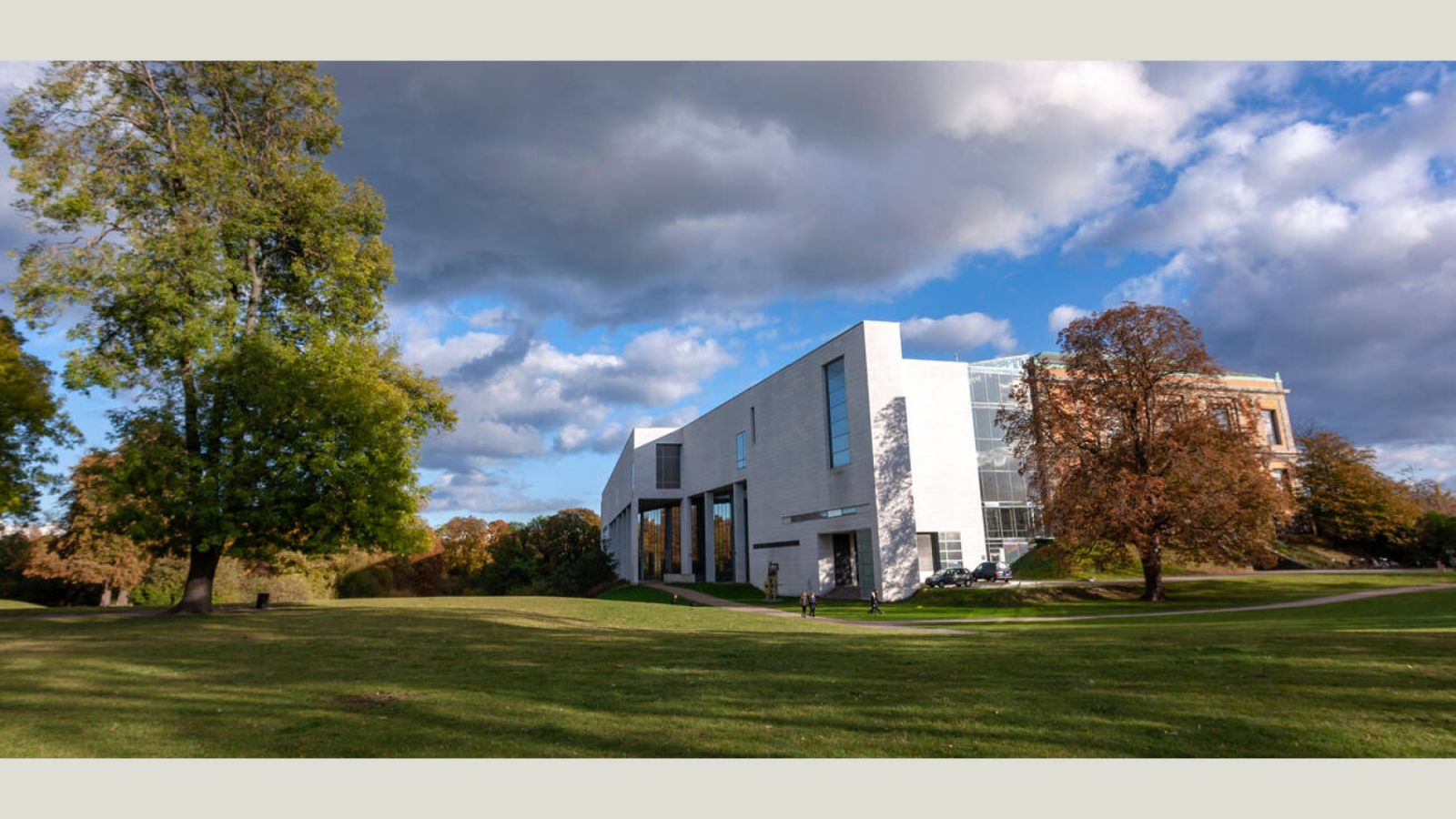
THE NATIONAL GALLERY OF DENMARK
As research for period films, I look at paintings at the National Gallery of Denmark. It’s a huge, marvelous museum in the center of Copenhagen. It’s so quiet, which helps me focus. My favorite Danish painters exhibited there include Jens Juel, Christoffer Wilhelm Eckersberg, Wilhelm Marstrand and Vilhelm Hammershøi. I get very inspired by their paintings and love studying their details, like fabrics, patterns and rings. I keep those details in mind and use them in my costume drawings.
“As research for period films, I look at paintings at the National Gallery of Denmark.”
![]()
Episode
![]()
København K
PISSERENDEN
For films set in the 1970s and ’80s, I buy clothes in Pisserenden, an area full of small vintage shops in central Copenhagen. Pisserenden means ‘‘pissoir,’’ and it used to be a red-light district. But it became too expensive, so the prostitutes left. The vintage shops are mostly located on three streets: Studiestræde, Sankt Peders Stræde and Larsbjørnsstræde. My favorite ones are Episode and København K. But they’re all very nice and sell a lot of original ’70s shirts with long collars.
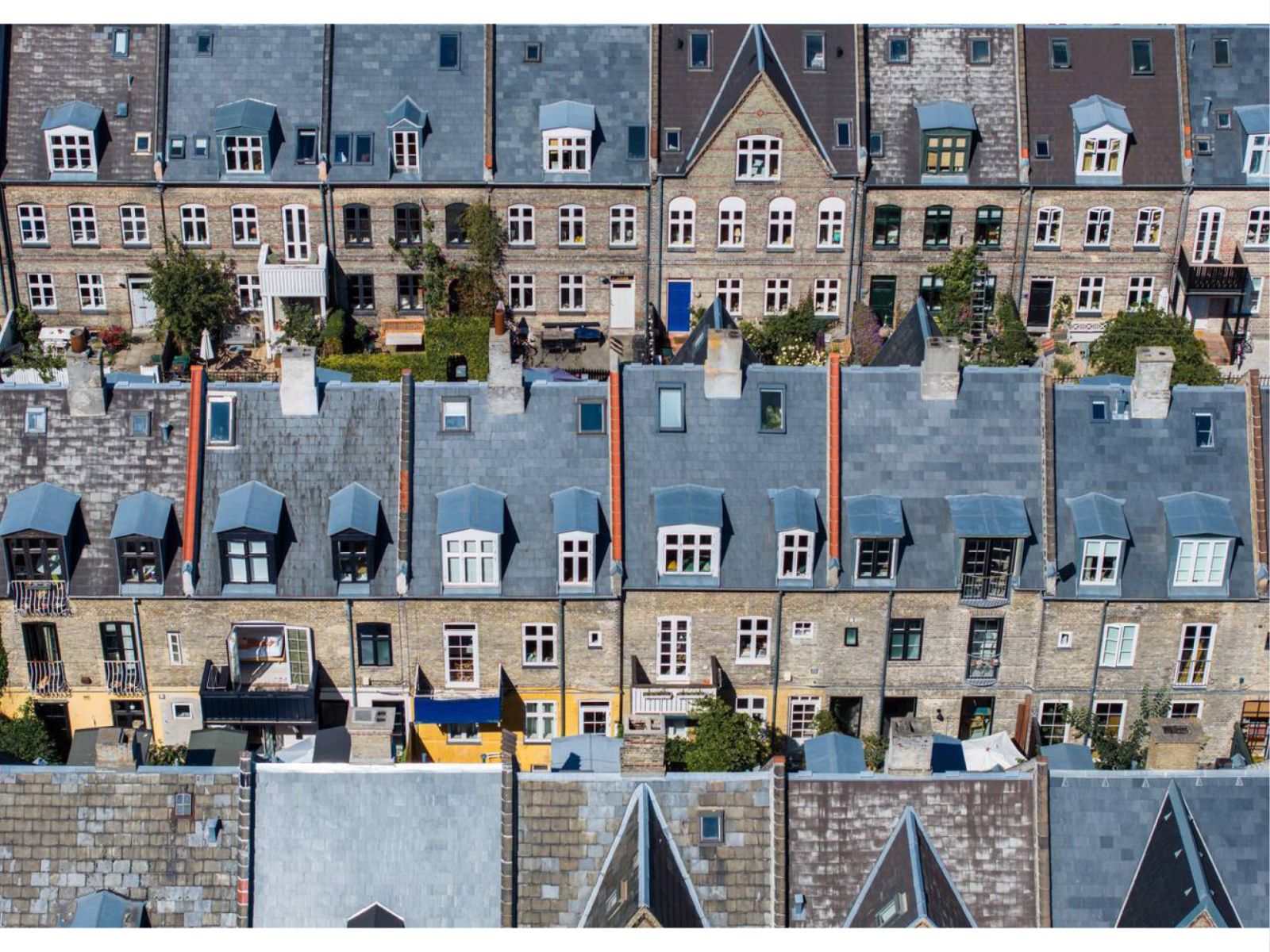
An aerial view of Kartoffelrækkerne
KARTOFFELRÆKKERNE
I live in northern Copenhagen with my husband, but I have a town house in Kartoffelrækkerne, an area in the city center, by Sortedam Lake. Kartoffelrækkerne [i.e., ‘‘Potato Row’’] is made up of 11 streets with rows of three-floor 19th-century townhouses. It’s a very special and cozy place with not much traffic. There are a lot of trees and flowers, and children play on the street. It’s like a little village. There are also a lot of shops and cafés. When I go there, I enjoy sitting at Emmerys café on Øster Farimagsgade street and watching passersby. And if I happen to be working on a contemporary film, I draw inspiration from what they’re wearing.
